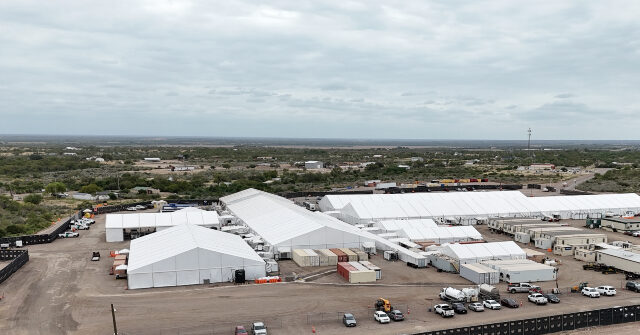In Eagle Pass, Texas, internal sources from the Customs and Border Protection (CBP) agency reveal that the migrant release system remains fully operational, awaiting a potential resurgence in migrant crossings dependent on the outcome of the upcoming election. This system includes significant processing centers in San Diego and Brownsville, which have been maintaining operations despite a notable decline in the number of migrants attempting to cross the border. The internal source, who remains unnamed due to restrictions against discussing media interactions, indicates that this persistence is concerning, as it may imply governmental expectations of a future increase in migrant flows should Kamala Harris win the presidency.
Recent developments have shown that Mexico has dramatically increased its border enforcement efforts, effectively curbing illegal crossings in various regions along the southern border. The ongoing operational status of the processing centers raises questions about the administration’s intentions regarding future migrant policies. Some CBP officials express concern that the leftover infrastructure signals a propensity for the government to resume its previous migration policies—specifically those that allow for the mass release of migrants following processing—post-election.
Breitbart Texas investigated the Firefly processing center near Eagle Pass, which currently hosts fewer than 300 migrants, showcasing a stark contrast from December 2023 when it held more than 5,000 individuals. This facility serves multiple purposes, accommodating unaccompanied minors, single adults, and family units awaiting processing and release. With operational costs exceeding $10 million monthly, and with more than 100 employees per shift, critics argue that continued operations—despite reduced numbers—indicate a readiness to ramp up processing and release efforts in anticipation of increased crossings.
Additionally, a parallel processing facility in Tucson has recently expanded its capacity in light of rising numbers of apprehended migrants. Initial operational costs for this facility were over $100 million, with monthly expenditures now estimated at approximately $14 million. The Department of Homeland Security’s Office of the Inspector General highlighted in a recent report that a substantial portion of the federal budget—$314 million in Fiscal Year 2022—was allocated for temporary soft-sided centers in key border areas, and criticized the lack of detailed justification provided for the ongoing need for these facilities.
Beyond operational expenditures, many Border Patrol employees harbor skepticism regarding the administration’s commitment to long-term border security. There is a prevailing sentiment that had there been any real intent to forge agreements with Mexico to prevent permanent migrant inflows, these facilities would have been shut down long ago. The allocation of resources for these processing centers, characterized as a means of facilitating rather than curtailing migrant entry, suggests an underlying strategy to accommodate continued migrant influx post-election.
Randy Clark, a former Division Chief for Law Enforcement Operations with the Border Patrol, emphasizes the implications of these findings. Having dedicated over three decades to the agency, Clark’s insights underscore a broader concern within the Border Patrol community regarding the administration’s motives tied to migrant release policies. The prevailing thought in the agency is that the current infrastructure is indicative of a readiness to re-implement previous migrant facilitation strategies, further complicating the existing challenges faced at the border.

